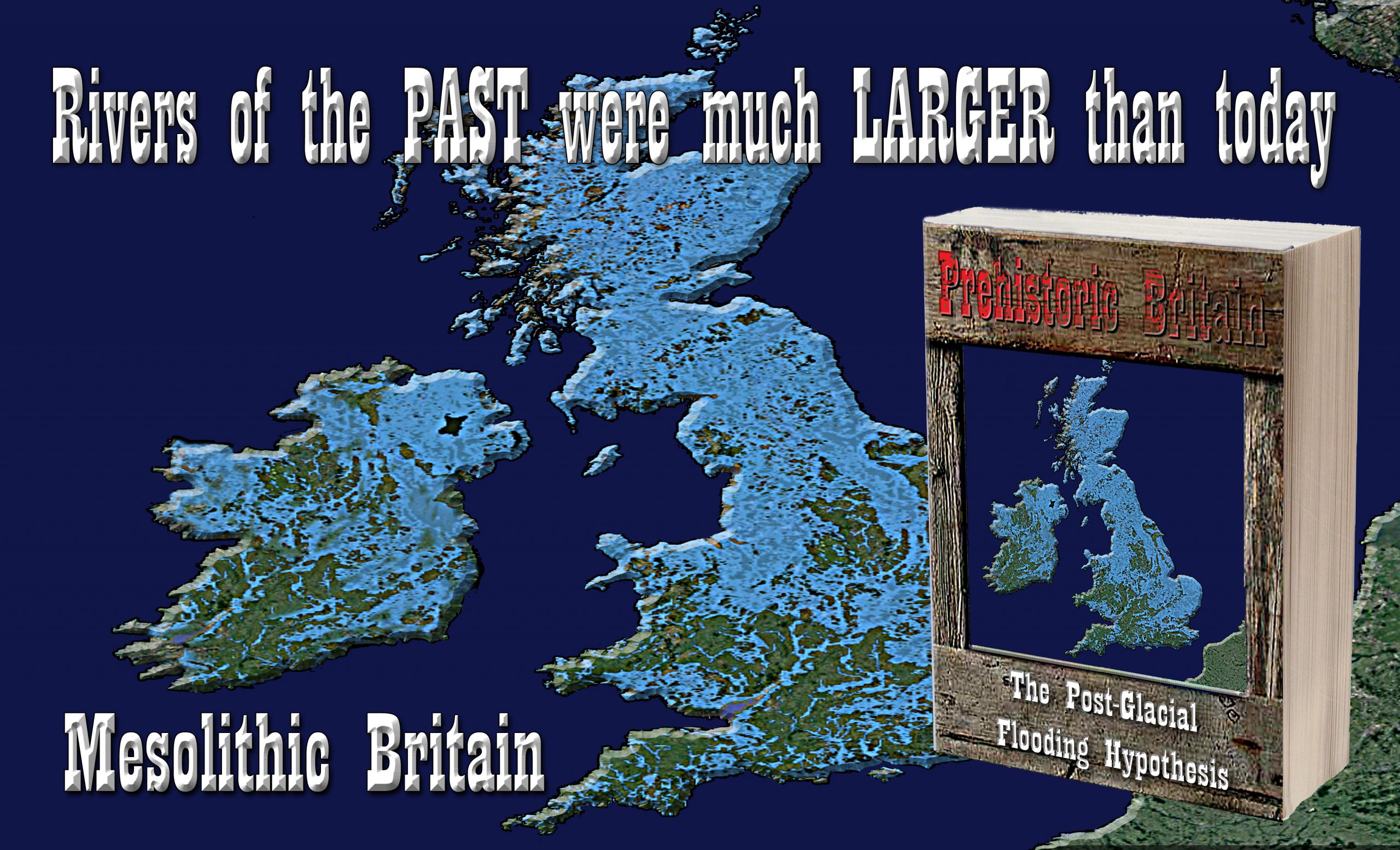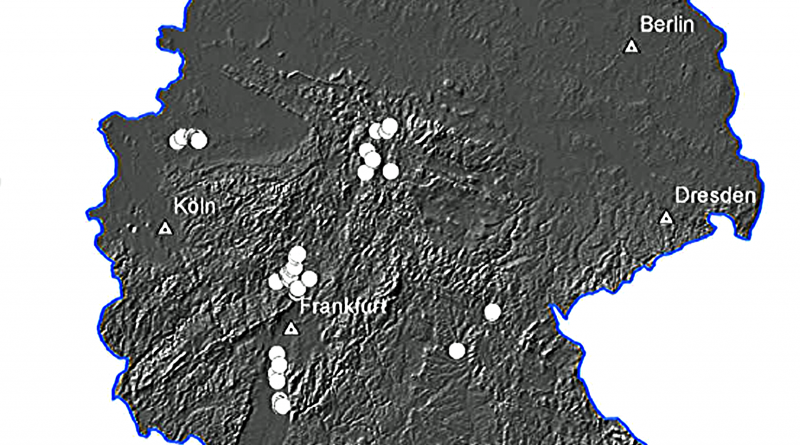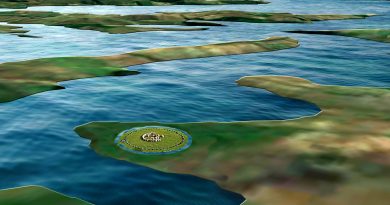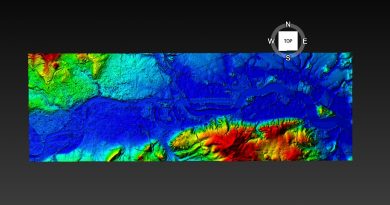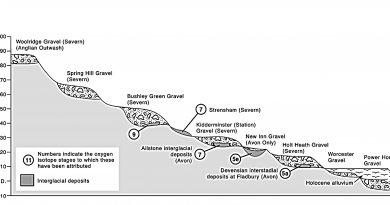Chapter 6 – Germany’s Post-Glacial Flooding
Book Extract……………………………..
A conspicuous gap in the radiocarbon record of the Iron Gates Mesolithic suggests that many riverbank sites were abandoned between c 8250 and 7900 cal B.P. This period of site abandonment is linked to increased flooding along the Danube, which can be correlated with a distinct global climatic oscillation (Bonsall et al., 2002). This has a direct connection to the Black Sea flood.
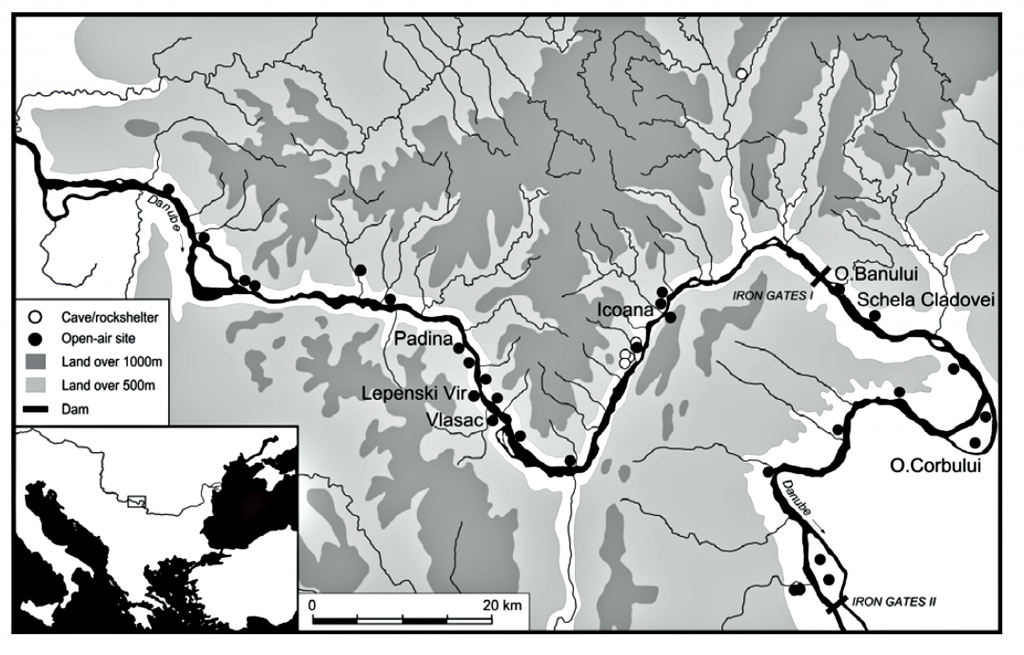
| Figure 21. The Iron Gates, Germany |
There is evidence for a significant period of flooding on several rivers in central Europe (Becker & Schirmer 1977; Leuschner et al. 2000), Britain and the Danube delta where there was a major channel avulsion (Ghenea & Mihaelescu 1991 & Bonsall et al., 2002).
However, the most explicit record of severe flooding at this time comes from the middle Durance valley in the French Alps where a period of substantial river aggradation is securely dated to between 8250 and 7950 cal B.P. (Miramont et al. 2000).
Typically, the Iron Gates sites are located close to the bank of the Danube, and the archaeological remains survive between 5 and 13 metres above the average summer water level (before the dam closures downstream of 1972 and 1995).
Until just over a decade ago, it was assumed by many archaeologists that the Holocene in Europe was characterised by relatively limited climatic variability. But, recent studies of ice cores, lake and cave sediments have overturned this traditional view.
Geomorphological studies of river systems have shown them to be particularly sensitive to small-scale changes in climate in both the prehistoric and historical periods that are not registered in the palynological record of vegetation change. This has significant implications for the understanding of the European archaeological record since some of the largest concentrations of ancient human populations and settlements occurred in river valleys.
A paper, ‘Holocene river activity: analysing 14C-dated fluvial and colluvial sediments from Germany’ (Hoffman et al.,2008) – studied flooding from five-hundred and six 14C ages originating from German rivers and hillslopes, that were compiled to reconstruct phases of increased geomorphic activity and stability during the Holocene. Dates of nine periods of activity are identified (peaking at 7050, 6250, 5525, 3690, 2250, 1350, 820, 325 BC and since 875 AD), from the German parts of the Rhine, Danube, Weser, and Elbe catchments. To reduce bias towards land use, 14C ages directly correlated with archaeological sites were excluded, and only 432 14C ages of organic remains sampled from alluvial and colluvial sediments were used in the analysis.
They concluded that Based on the frequency distributions of change dates from GB, Spain and Poland, Macklin et al. (2006) reconstructed fifteen periods of significant flooding in Europe at 1380 AD, 1290 AD, 1090–1070 AD, 910 AD, 660–640 AD, 120–1 A.D., 600–610 BC, 780–860 BC, 1560–1590 BC, 2890–2910 BC, 3590–3690 BC, 4840–4870 BC, 5640 BC, 7490–7580 BC, 9210–9250 BC.
Due to the growing population and intensive agricultural activities during the Bronze age, the increased geomorphologic activity between 1300 BC and 820 BC cannot unequivocally be related to the climate, and since 875 AD, the growing population density is considered as the significant external forcing. The differential response of hillslopes and floodplains suggest a weak hillslope-channel coupling before, and during the Early and Middle Holocene with a more robust coupling with increasing human impact since 1500 BC.
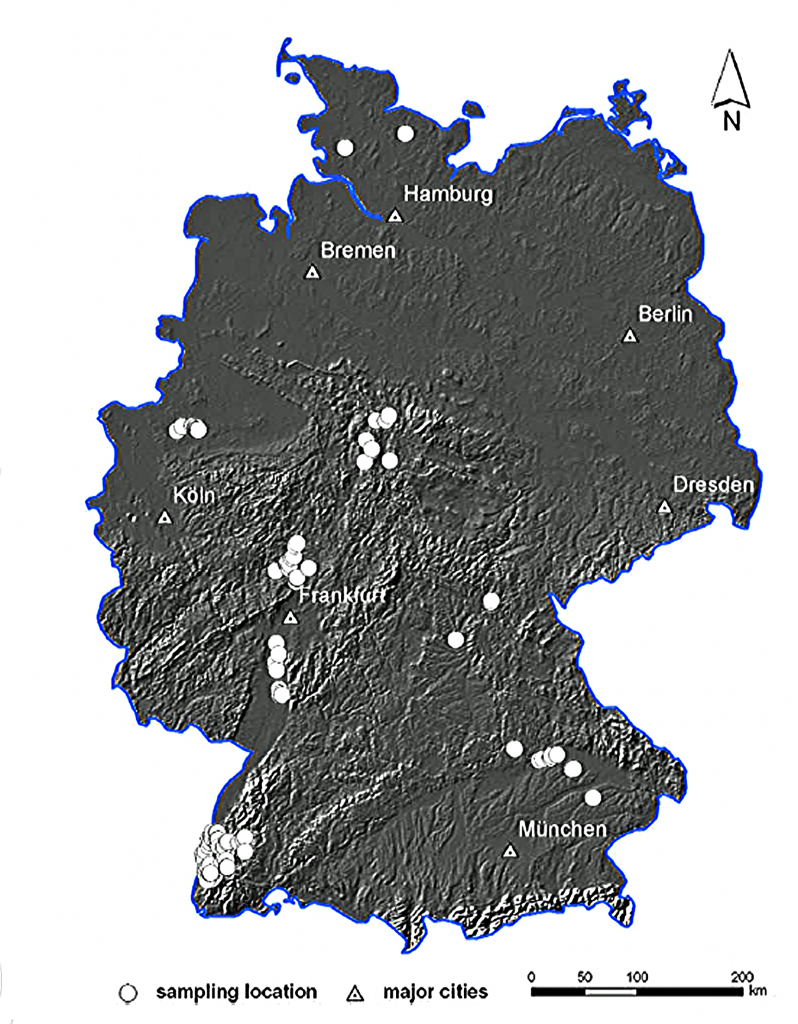
| Figure 22 – Five-hundred and six 14C ages originating from flooded German rivers and hillslopes |
This confirms that like the North American model, that meltwater from the last ice age travelled over 1200 kilometres, from the edge of the physical boundary of the Eurasia glacier. These rivers were overwhelmed for over a 10,000-year period with periodic flooding as a consequence of increased precipitation and a high water table.
information about British Prehistory and other articles/books, go to our BLOG WEBSITE for daily updates or our VIDEO CHANNEL for interactive media and documentaries. The TRILOGY of books that ‘changed history’ can be found with chapter extracts at DAWN OF THE LOST CIVILISATION, THE STONEHENGE ENIGMA and THE POST-GLACIAL FLOODING HYPOTHESIS. Other associated books are also available such as 13 THINGS THAT DON’T MAKE SENSE IN HISTORY and other ‘short’ budget priced books can be found on our AUTHOR SITE. For active discussion on the findings of the TRILOGY and recent LiDAR investigations that is published on our WEBSITE you can join our FACEBOOK GROUP.
